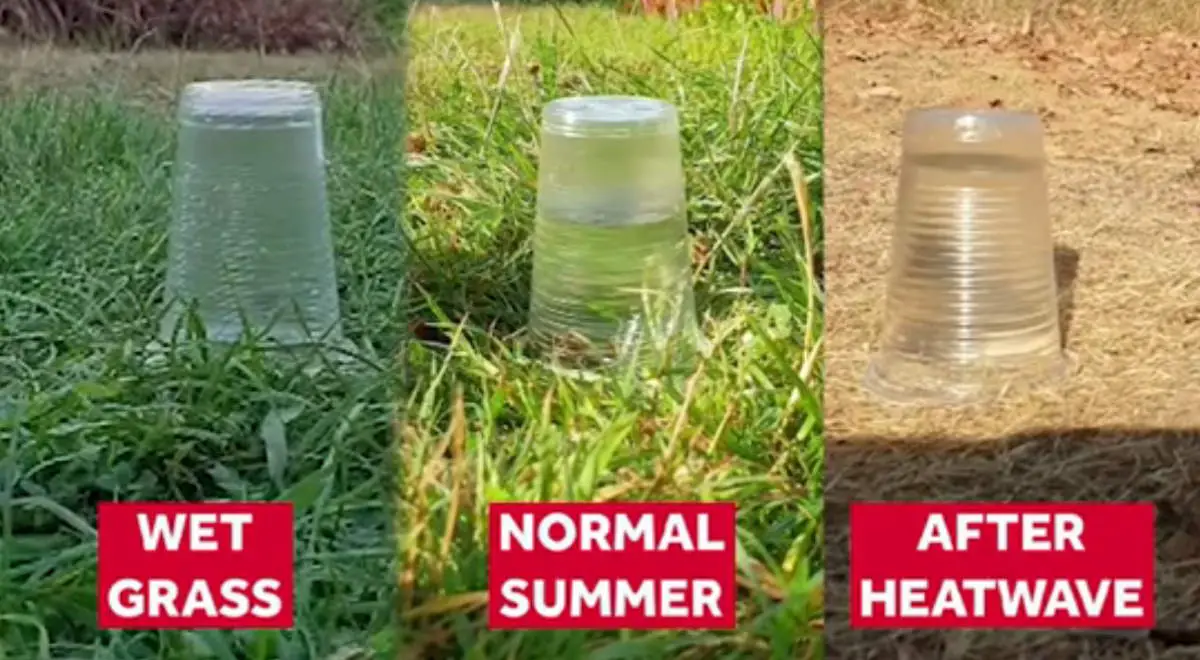Dr. Rob Thompson, a meteorologist from the University of Reading shows just how long it takes water to soak into the parched ground, illustrating why heavy rainfall after a drought can be dangerous and might lead to flash floods.
The video is filmed in the Harris Garden of the University of Reading.
Here’s why a heavy rainfall after a drought can cause flash floods
Long periods of sunny weather; a few heavy rain showers. That’s all fine… or is it? Because of global warming, summer days are globally turning into long periods of drought with increasing frequency, while sudden heavy rainfall is causing catastrophic flooding.
But why? Why a heavy rainfall after a drought can cause dangerous floods?
A geotechnical engineer explains (source):
When drying up, clay soils shrink in size. Shrinkage in the drying process occurs due to the loss of water layers. The finer the particle size of the clay, the more water layers; hence the more shrinkage.
This shrinkage causes the tiny little holes in the soil body to close up. This is where the water lives in clay soils, in these tiny little holes. As you add more water it becomes softer, as you take away the water, it becomes harder.
Rehydrating the soil, it needs time to “soak” to absorb the water back to happy moisture content. If you pour water over the top it tends to flow over because it cannot absorb that quickly, due to the little holes being less prevalent.
That’s how and why heavy rainfall after a drought can cause dangerous flash floods.
Video: Floods, drought, and the consequences of extreme weather | DW Documentary
29 May 2016 is a day Frank Harsch will never forget. The mayor was in his office at the town hall in Braunsbach near Schwäbisch Hall in southern Germany. The rain was coming down in buckets. Suddenly he felt the building vibrate. When he looked out of the window, he saw a wave of brown water crashing past, carrying cars and debris along with it.
A storm and a few hours of heavy rain were all it took to transform a village stream into a devastating monster wave. Suddenly, Braunsbach was a disaster zone. It’s a situation that’s becoming all too familiar. The opposite scenario is equally common, of late: heatwaves and droughts that last several months. Despite the many flood catastrophes of summer 2021, in many regions, it’s simply too dry.
In other areas of Germany, trees are dying because moisture isn’t penetrating deep enough into the ground to reach the roots. Rainfall has decreased to such an extent in recent years that forestry workers have been forced to come up with new ways to direct water to where it’s most needed.
In the film above, weather experts and climate researchers predict what the future may have in store for us. Their forecasts may be bleak, but there are solutions and initiatives in place to at least try and mitigate the effects of extreme weather events.
Video: Las Vegas floods after a record drought
Sources
- Why does wet earth (like right after rain) absorb more water than dry earth (like right after a drought)? on Reddit
- Budget of NASA, Year by Year [1980-1989] - June 10, 2024
- Budget of NASA, Year by Year [1970-1979] - June 10, 2024
- Budget of NASA, Year by Year [1958-2024] - June 10, 2024
